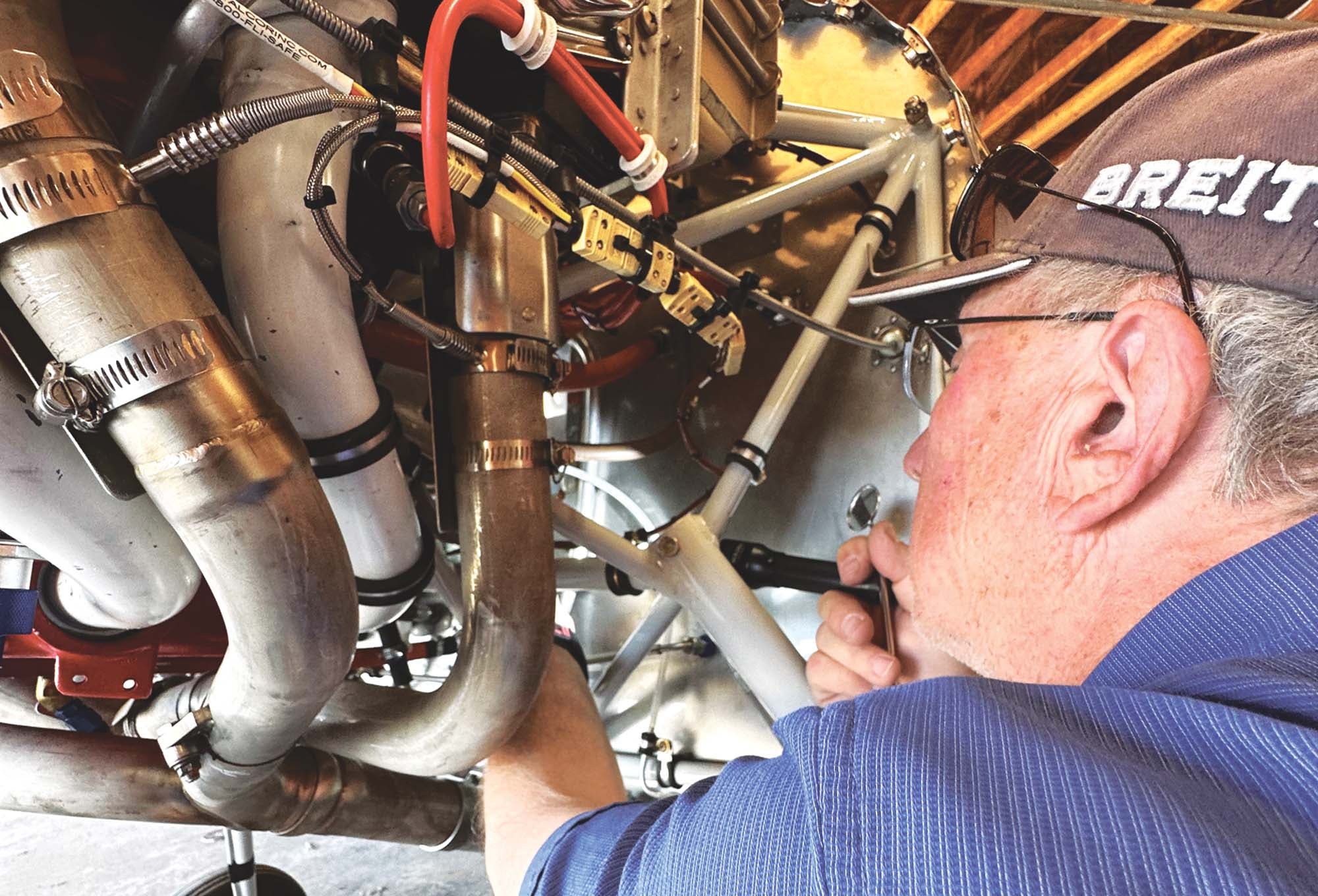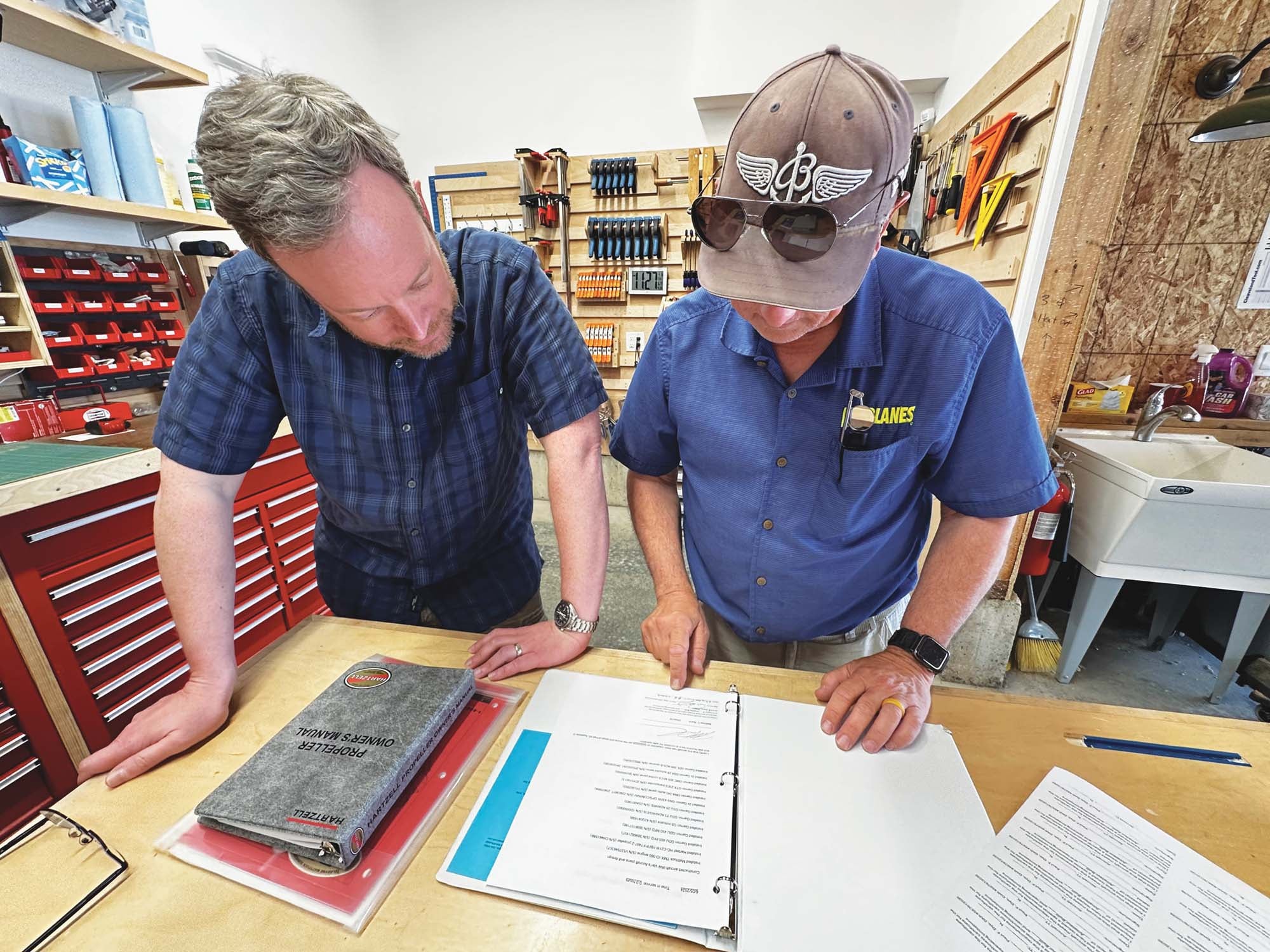
If you’ve built and flown your own airplane, you’re familiar with the term DAR, for Designated Airworthiness Representative. In order to get your homebuilt’s airworthiness certificate and operating limitations, you’ll have to deal with either the FAA directly or a designee, like me. Considering the current FAA workload, chances are very high you’ll be seeing a DAR.
So you may ask: How do you become a DAR? Well, the formal process includes an application, training and then paperwork on the part of your local FAA (FSDO or MIDO) office. But that is an oversimplification. No two people seem to go through the exact same process, but there are enough similarities that my own case is a useful example.
It began when my local FSDO determined a need for a DAR. That meant that they didn’t have the in-house resources to answer calls for Experimental/Amateur-Built inspections in a timely manner. As with most FAA offices, staffing is well below the levels of the workload that comes their way. And, quite frankly, their primary purpose is to ensure the safety of airline and other commercial aviation businesses so that the general public is assured of safe transportation without having to do their own risk analysis before every flight. Right below airline operations, there are incidents and complaints—all work that might be on an FAA inspector’s desk gets brushed aside when one of these comes into the office.
General aviation activity falls below those types of activities and Experimental airworthiness inspections are well down the list. Not that inspectors don’t like doing these inspections—most of them that I know love to get out of the office and look at airplanes! But the truth is that their supervisors have higher priorities for them. Hence the need for designees.

What’s a Designee, Then?
A designee is a private individual with the experience and skills necessary to do the work mandated for the FAA—think of them as a private contractor. You’ve dealt with Designated Pilot Examiners for checkrides and Designated Medical Examiners for your medical. If you owned a certified airplane, you’ve had an A&P with Inspection Authorization (IA) sign off the annual—they are sort of a designee as well.
Designated Airworthiness Representatives have the authority to issue airworthiness certificates on behalf of the administrator—but not all DARs can issue any kind of certificate. Of interest to homebuilders are DARs with “function codes” like 147 (E/A-B piston) and 148 (E/A-B turbine). Other codes exist for those authorized for rotorcraft or ELSA.
So how do you get started? In my case, my local FSDO approached me after the inspectors there had certificated three E/A-Bs for me over five years and they had gotten to know me and my background. They knew they were understaffed and there were no other DARs active in the region—so they asked (directed?) me to apply. The application was done online and was fairly straightforward—basic background information, detailed information on my experience and some references. You do have to hold an A&P and have built at least one E/A-B aircraft.
Once you have applied, you need to get into the training flow. Most of the training is online and takes about 20 hours—nothing egregious and the tests are typical for online government courses. Pay attention to the material and the tests are simple. Once you complete the online training, you need to sign up for a weeklong Initial Aircraft Certification course held at the FAA Academy in Oklahoma City. I had no trouble getting in, but you are responsible for the costs. The course itself was about $450, and then of course you have travel and hotel expenses. Fortunately, OKC is inexpensive!
The course itself took four and half days and was mostly filled with students who worked for major airframe manufacturers (Boeing and Gulfstream in my class) and will be doing certification paperwork for the administrator at their company. There were just a couple of us there taking the training to be DARs but everyone gets the same course. It is heavy on process and how to look things up in the appropriate process documents. Being a former government employee, I found it all to be pretty logical and easy to navigate—in a governmental sort of way, of course. (Which to many will seem illogical.) The class is taught by longtime FAA inspectors who have “been there, done that” for decades—so they pepper the lectures with lots of real-world stories to keep you awake. There are exercises that are mostly appropriate for the certified guys, but they aren’t really graded, so smile and wave. When the course is complete, you have to go home and take the end-of-class exam online. It sounds scary, but it’s an open book and I completed the 50 questions in less than half the allowed time. Piece of cake!
With the coursework out of the way, it is up to the FSDO (or MIDO) to keep the ball rolling. The approval process includes them forming a committee that has to include an FAA headquarters person and the coordination in my case took about four months. Since our FSDO was essentially pursuing me (rather than me pursuing the FSDO for a designation), the ball was in their court and it was up to them to keep things on track. The actual process could be done in a couple of days—but given all the other responsibilities they have for a short-staffed office, the calendar keeps marching relentlessly on, so things take time.
I finally received the congratulatory letter informing me that I was now in the service of the administrator (“so don’t screw up or we will remove your privileges!”) about nine months after the process began. Along with the letter comes access to the “inside” of a couple of web-based computer programs used by the FAA to manage designees (remember—there are DMEs, AMEs, DPEs, DARs, etc.) as well as the program of primary interest, known as AWC—the Airworthiness and Certification Portal. While I had used it as an applicant for previous airworthiness certifications, I now could see it from the inside as well—a different view with different responsibilities.
With my designation letter in hand, I still couldn’t quite hang out my shingle as a DAR. I needed to do at least one inspection under the direct supervision of my managing specialist—the FSDO employee for whom I am essentially the “eyes, ears and hands” in issuing AWCs. You see, despite all of the formal training, I really had no idea of the mechanics of working the various programs and processes that result in the printing and handing over of an airworthiness certificate. I came into the DAR process with a deep knowledge of aircraft construction and inspection—but the nuts and bolts of pushing the right keys on the computer is left up to OJT. The fact is, there are no manuals. So if your DAR appears to be learning along the way, don’t be surprised. The government IT organizations are the gatekeepers for the certificates you desire.
Truth is, I’m just getting started with this DAR business but I find it interesting and rewarding, a terrific way to “give back” to this industry that I’ve been so much a part of over the decades.











Is a DAR exposed to liability if he misses an airworthiness item and there is a resulting accident?
Although anyone can sue anyone for just about anything, the DAR is not particularly liable because they don’t actually make any statements about the “condition of the aircraft for safe operation” in the logbook or other documentation – the builder attests to that. People get (rightfully) confused by the term “airworthy” in regard to experimental aircraft. It doesn’t actually mean what you’d think it means (or what it means for certified aircraft). That is why we never use the term “airworthy” in an E-AB logbook – we use the term “condition for safe operation”.
The mission of the DAR is to ensure safety. Would not signing off an aircraft which turns out to not be safe cause accident lawyers to descend upon the DAR?